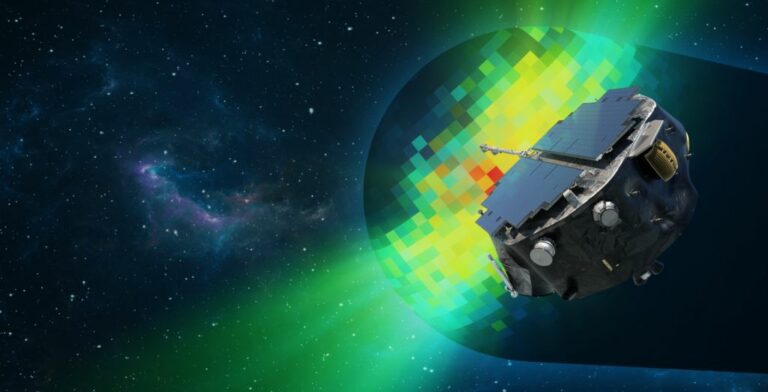NASA’s Interstellar Mapping Probe Gears Up for Launch in 2025
NASA engineers have successfully accomplished a significant milestone in the development of the Interstellar Mapping and Acceleration Probe (IMAP) spacecraft. The project is transitioning from the development and design phase to the assembly, testing, and integration stage, with a scheduled launch in late Spring 2025. Following liftoff, the spacecraft will journey to the Earth-Sun L1 Lagrange Point to examine the interaction between the Sun’s solar wind and charged particles originating from beyond the Solar System.
IMAP builds upon the findings of the Voyager spacecraft, the Interstellar Boundary Explorer (IBEX), and aims to address key questions in heliophysics, focusing on the energization of charged particles from the Sun and the interaction of the solar wind with interstellar space at its boundary.
The mission’s objectives include mapping the boundaries of the heliosphere, the protective electromagnetic bubble surrounding our solar system. IMAP will contribute to a better understanding of this region, where the solar wind from our Sun collides with material from the wider galaxy, thereby regulating the influx of harmful cosmic radiation into the heliosphere.

It will also contribute to resolving the ongoing debate about the actual configuration of the heliosphere. A 2020 study, utilizing data from multiple spacecraft, proposed that the Sun’s sphere of influence might have a flattened croissant shape, deviating from the previously assumed comet-like elongated form.
Positioned approximately 1.5 million km (1 million miles) from Earth, the spacecraft will gather and analyze particles that penetrate through, aiding in mapping and comprehending the spectrum of particles in interplanetary space.
The IMAP mission recently achieved a significant milestone known as Key Decision Point D, facilitating the transition from the development and design phase to testing and integration. The targeted launch date was adjusted by one month, moving from late April to May 2025, to ensure that the project team has sufficient resources to address risks and technical complexities during system integration and testing, as stated in a recent NASA mission blog post.
Currently undergoing assembly within the clean room at the Johns Hopkins Applied Physics Lab in Laurel, Maryland, the spacecraft’s progress can be observed through a live, 24-hour feed showcasing the assembly, integration, and testing processes.
Over the upcoming months, engineers will undertake the installation of various intricate systems, including electronics, communication systems, thermal systems, propulsion, batteries, and more, to ensure the operational functionality of the spacecraft. Simultaneously, all 10 instruments of IMAP are slated to arrive from different parts of the world and will be systematically integrated with the spacecraft. Subsequently, the spacecraft will undergo a series of testing phases before advancing to the final testing stage at NASA’s Goddard Space Flight Center in preparation for launch.
Do not forget to share your opinion with us to provide you with the best posts !




0 Comments